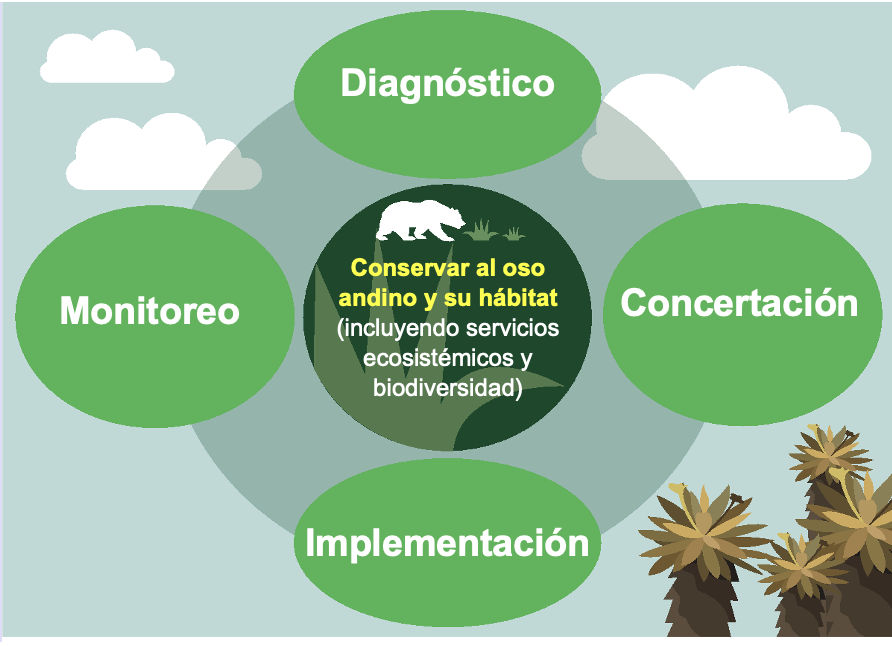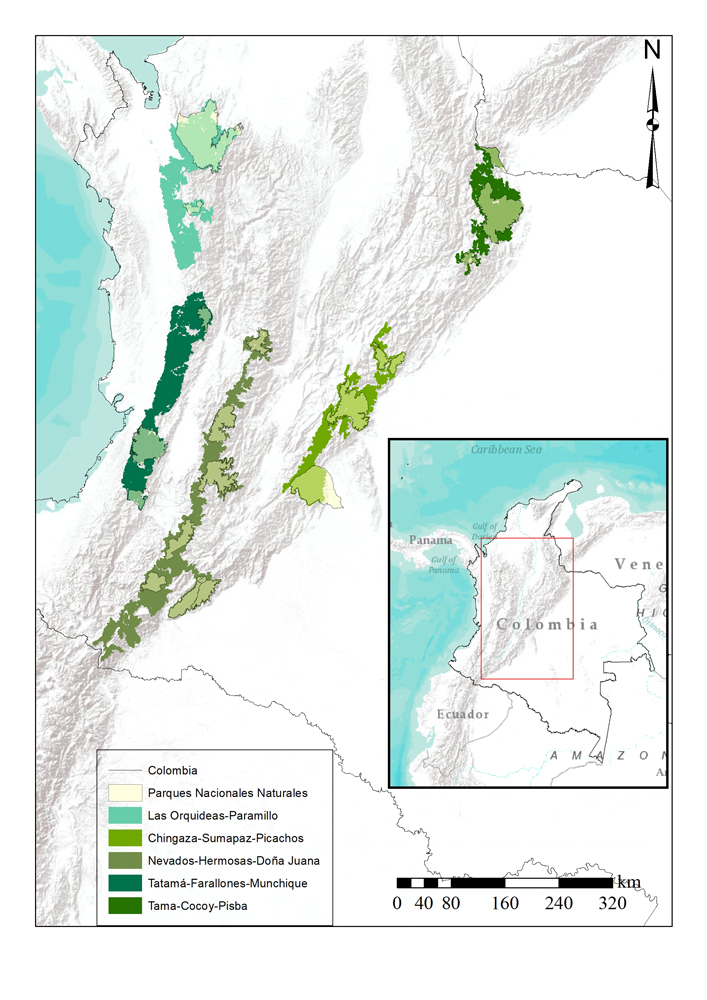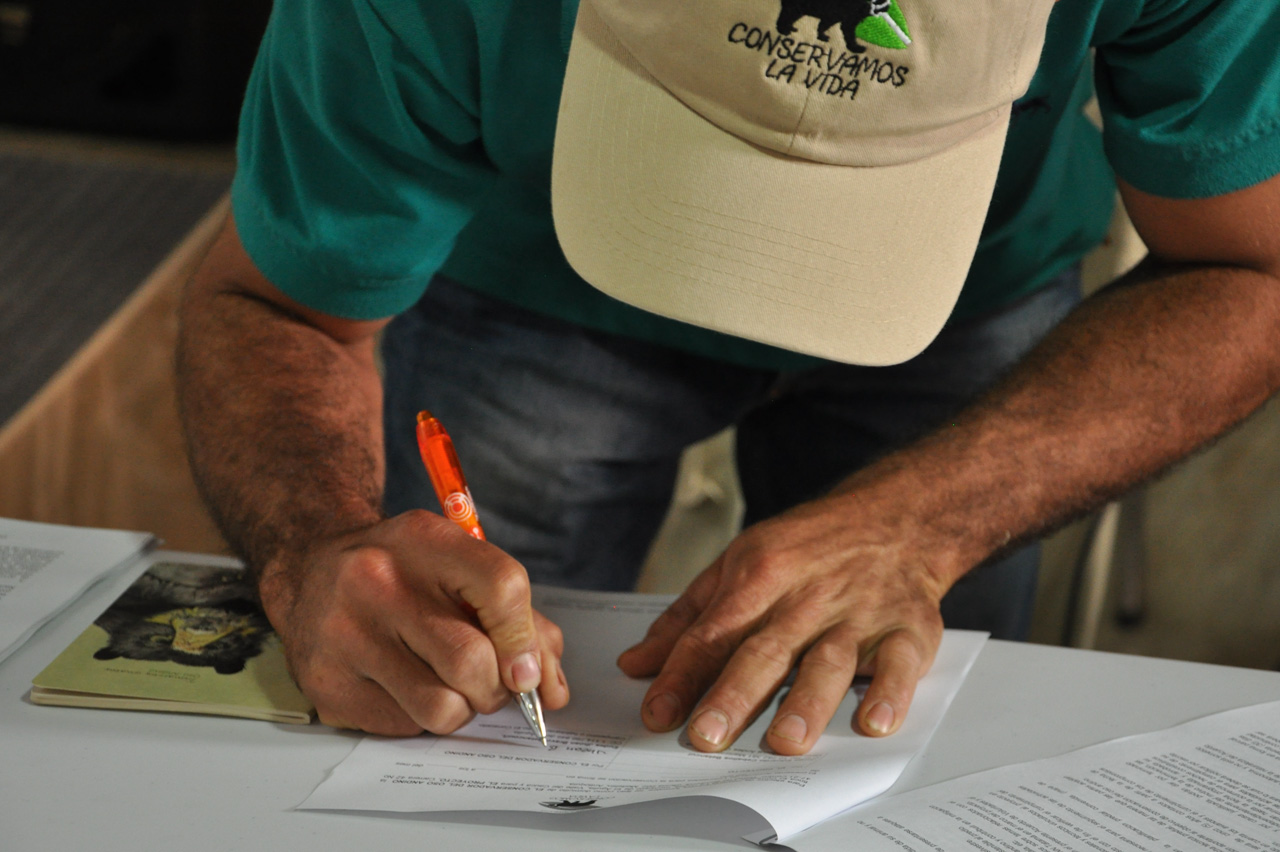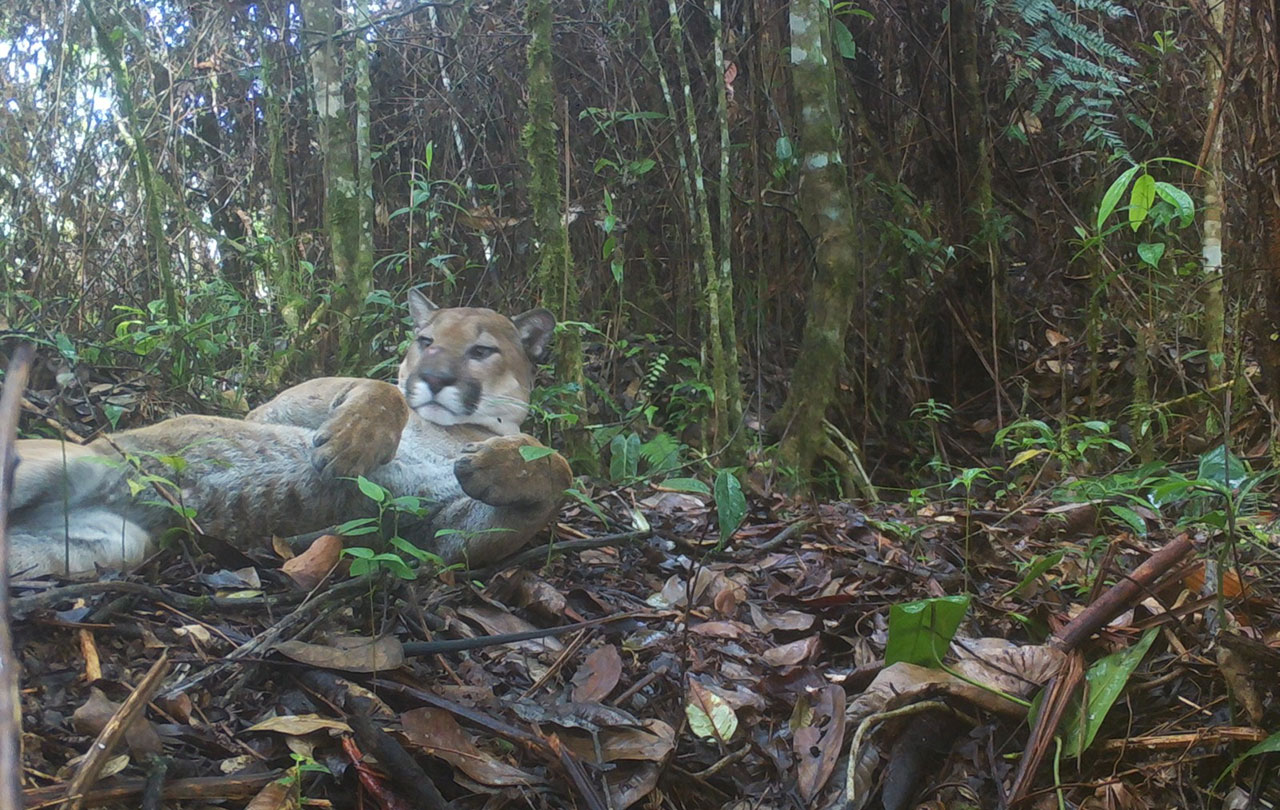Through actions carried out in the four phases of the project, Conservamos la Vida aims to increase the occupancy of the Andean bear species and enhance the connectivity of the wild spaces used by these bears. It also strives to foster more positive interactions between human populations and this mammal, creating spaces for coexistence.

We make a diagnosis
Conservamos la Vida conducts two types of diagnoses: one is biological, aiming to determine the occupation patterns, i.e., the abundance of the Andean bear in the prioritized areas of the project. It also identifies the threats the species faces in its habitat.
The second diagnosis is carried out in parallel and evaluates the socioeconomic dynamics of the human communities living in the landscapes where the bear is distributed. It also assesses the communities' perceptions towards the species.
This last diagnosis is called the Andean Bear Conflict Landscape Diagnosis. Its goal is to prioritize, based on biological and social criteria, the geographical areas to be intervened by the technical-productive team.
We identify conservation areas
According to studies, the minimum area required to maintain a viable population of the Andean bear is 3,800 square kilometers (approximately the size of Cape Verde). In Colombia, there is no protected area that large in the Andean region.
Therefore, it is crucial that both protected areas and areas of human use allow for the conservation and maintenance of this species, which is vital for Andean ecosystems.
Through the Andean Bear Conservation Strategy in Colombia’s National Natural Parks 2016-2030, five Core Conservation Units (CCUs) were identified. These areas range from 7,686 square kilometers to 12,452 square kilometers in size.

These CCUs contain protected areas at the national, regional, and local levels, indigenous reserves, Afro-descendant communities, and private land where productive activities take place.
Based on this identification, Conservamos la Vida has developed preservation actions, management of interactions, and work with rural communities in two CCUs: Tatamá-Farallones-Munchique and Nevados-Puracé-Doña Juana.

Conservation Actions
The alliance aims to maintain, conserve, and improve the habitat of the Andean bear, fill knowledge gaps within human communities about the species, and generate information for management and the economic opportunities that its conservation directly and indirectly provides.
As an umbrella species, actions to protect the Andean bear help conserve the entire biodiversity surrounding it, which is associated with its presence.
These efforts also contribute to improving the quality of life for people who share territory with the bear.
Alliance with Communities
Through dialogue processes with communities that interact with the Andean bear, conservation actions and productive improvements can be agreed upon within private lands, previously identified in the prioritized work areas.
This concerted process allows for the consensual construction of intervention strategies at the farm level, aimed at improving productivity and reducing pressures on forested areas.
All of this is carried out through a set of implementations, which depend on the productive activity practiced on the farms.
This process is a priority as it takes into account the knowledge and needs of the communities. Each farm is a unique environment, meaning that even if we work on neighboring farms, the implementations will differ due to the individual needs of each owner.
Through the concertation process and joint construction between the alliance's staff and the potential protectors of the bear, a zoning of the farms can be created to maximize the participation of rural, Afro-descendant, and indigenous communities
Conservation Agreements
After the consultation process on prioritized farms, the construction, socialization, and signing of voluntary conservation agreements take place, where farmers become protectors of the Andean bear.
The signing of the document is entirely voluntary. It outlines the responsibilities between the Conservamos la Vida Alliance and the farmers.
With the signing of the voluntary conservation agreement, a technical record is created for each farm within the alliance, and the process of implementing restoration actions, conservation area isolation, conversion, and improvement of productive activities begins
 Photo: Zaira Ríos / WCS Colombia
Photo: Zaira Ríos / WCS Colombia
In the case of productive improvement, good agricultural and livestock practices are strengthened to reduce pressure on natural resources and protect water supply basins. Additionally, activities are carried out for soil recovery in productive processes.
As for conservation actions, landscape management tools are established for both active and passive ecological restoration, isolation of well-preserved forests, and protection of water basins.
Simultaneously, support is provided to educational communities through the Verde Vivo project. This brings students from rural areas closer to conservation activities, promotes awareness-raising actions, and addresses environmental issues, contributing to the consolidation of an environmental culture.
Monitoring
As a way to assess the actions carried out within properties that conserve the habitat of the Andean bear and have improved their productive activities, periodic biological monitoring is conducted.
The goal is to evaluate the impact on Andean bear populations after the implementations and socioeconomic improvements of the people involved in the Conservamos la Vida alliance.
 Monitoring image of puma concolor from conservation areas within a private property of the Conservamos la Vida alliance.
Monitoring image of puma concolor from conservation areas within a private property of the Conservamos la Vida alliance.
This monitoring is conducted every four years within each of the prioritized locations.
Traslated with AI support